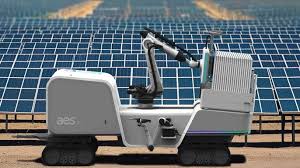
Breaking News
 WATCH: "Let This Serve as Notice… BEWARE!" - Trump Posts EPIC Video...
WATCH: "Let This Serve as Notice… BEWARE!" - Trump Posts EPIC Video...
 OSL 115 - Why I Am Done At Infowars
OSL 115 - Why I Am Done At Infowars
 EXCLUSIVE: Alex Jones Exposes Why Owen Shroyer Really Quit...
EXCLUSIVE: Alex Jones Exposes Why Owen Shroyer Really Quit...
 I asked A.I. to design the ultimate FPV Flying Wing... and it's INSANELY EFFICIENT!
I asked A.I. to design the ultimate FPV Flying Wing... and it's INSANELY EFFICIENT!
Top Tech News
 Neuroscientists just found a hidden protein switch in your brain that reverses aging and memory loss
Neuroscientists just found a hidden protein switch in your brain that reverses aging and memory loss
 NVIDIA just announced the T5000 robot brain microprocessor that can power TERMINATORS
NVIDIA just announced the T5000 robot brain microprocessor that can power TERMINATORS
 Two-story family home was 3D-printed in just 18 hours
Two-story family home was 3D-printed in just 18 hours
 This Hypersonic Space Plane Will Fly From London to N.Y.C. in an Hour
This Hypersonic Space Plane Will Fly From London to N.Y.C. in an Hour
 Magnetic Fields Reshape the Movement of Sound Waves in a Stunning Discovery
Magnetic Fields Reshape the Movement of Sound Waves in a Stunning Discovery
 There are studies that have shown that there is a peptide that can completely regenerate nerves
There are studies that have shown that there is a peptide that can completely regenerate nerves
 Swedish startup unveils Starlink alternative - that Musk can't switch off
Swedish startup unveils Starlink alternative - that Musk can't switch off
 Video Games At 30,000 Feet? Starlink's Airline Rollout Is Making It Reality
Video Games At 30,000 Feet? Starlink's Airline Rollout Is Making It Reality
 Grok 4 Vending Machine Win, Stealth Grok 4 coding Leading to Possible AGI with Grok 5
Grok 4 Vending Machine Win, Stealth Grok 4 coding Leading to Possible AGI with Grok 5
Lowering the Cost of Utility Scale Solar With Robots

For a 1 MW (megawatt) utility-scale solar farm, the approximate cost is $980,000, not including land acquisition. The total cost per watt is around $0.98, reflecting the significant cost savings from economies of scale compared to residential installations.
Leasing land: Between $1,000 and $5,000 per acre per year.
Buying land: The average cost to build a solar farm, including land, is $300,000 to $500,000 per acre.
Companies using automation in solar installation for utility-scale projects include
AES Corporation, Terabase Energy, Built Robotics, Charge Robotics, and Rosendin Electric
 Terabase Energy Terafab is twice as fast installing solar farms.
Terabase Energy Terafab is twice as fast installing solar farms.
 China utilizes robotics extensively in its solar energy sector for both installation and maintenance, with some cleaning robots even powered by their own built-in solar panels to operate autonomously. A Chinese firm, Leapting, has used robots to install a 350MW solar farm in Australia and says each robot does the work of 3 or 4 humans, but much quicker and it's looking to 100% automate solar farm setup.
China utilizes robotics extensively in its solar energy sector for both installation and maintenance, with some cleaning robots even powered by their own built-in solar panels to operate autonomously. A Chinese firm, Leapting, has used robots to install a 350MW solar farm in Australia and says each robot does the work of 3 or 4 humans, but much quicker and it's looking to 100% automate solar farm setup.
The primary components of these costs include equipment, installation labor, and land. Automation and new technology are critical to further lowering these costs, particularly for labor and installation.
Robotics and automation will transform solar farm construction into a faster, safer, and more precise process.
Site surveying: Autonomous ground robots, like Civ Robotics' CivDot, use GPS and mapping data to precisely mark coordinates for pile and racking systems, replacing the need for extensive manual labor.
Pile driving: Heavy-duty autonomous pile-driving machines, such as the Built Robotics RPD 35, can install hundreds of steel support beams with maximum accuracy. This increases speed, reduces installation errors, and frees human workers from dangerous, physically demanding tasks.

 HERE COMES THE MOTHERSHIP
HERE COMES THE MOTHERSHIP

